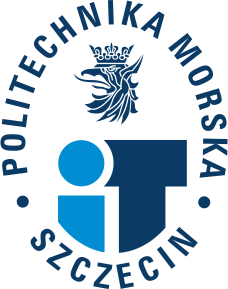Publikacje naukowe Paweł Banaś
DOROBEK NAUKOWY PRACOWNIKA W BAZIE WIEDZY POLITECHNIKI MORSKIEJ
https://bazawiedzy.am.szczecin.pl/pl/scientist/315
Tytuł: The autonomous navigation system of a sea-going vessel
Autor/Autorzy: Pietrzykowski Z., Wołejsza P., Nozdrzykowski Ł., Borkowski P., Banaś P., Magaj P., Chomski J., Mąka M., Mielniczuk S., Pańka A., Hatłas - Sowińska P., Kulbiej E., Nozdrzykowska M.
Miejsce publikacji: Ocean Engineering,2022, 261, art.. No. 112104
Rok: 2022
Słowa kluczowe: Automatic communication; Autonomous navigation; Collision avoidance
Abstrakt: We propose an integrated comprehensive system of an Autonomous Surface Vessel (ASV), dedicated to ships with various degrees of autonomy. The system performs a variety of tasks aimed at safe voyage execution. The use of basic and additional information sources is envisaged, including data from unmanned remotely controlled and autonomous aerial vehicles, to increase situational awareness. After defining the assumptions and devising the architecture of the system, we built its model. The key elements of the model, collision avoidance and automatic communication modules, are capable of developing and agreeing on manoeuvres between autonomous vessels in the negotiation process. The model was implemented as a real time system and verified in three stages: laboratory tests, quasi-real tests using physical models of ships and in real operational conditions on board ships at sea. The research results have confirmed the correctness of the assumptions, designed system architecture and developed algorithms.
Tytuł: The use of automatic communication system on an example of a conversation between m/v Corvus J and m/v Baltic Ace
Autor/Autorzy: Anna Wójcik, Paweł Banaś
Miejsce publikacji: Annual of Navigation, vol. 25, pp. 267-274
Rok: 2018
Słowa kluczowe: automatic communication, reasoning mechanism, knowledge base
Abstrakt: Article presents the applications designed to perform automatic communication as a support for navigators steering their ships. Authors took into consideration the conversation between navigators in the collision situation that occurred at North Sea basin. The performed incorrect communication has been presented and alternative to it has been proposed. The results of simulation made with use of the prototype of automatic communication and negotiation system has been shown.
Tytuł: Analysis and generation of messages in an automatic communication system at sea
Autor/Autorzy: Zbigniew Pietrzykowski, Paweł Banaś, Paulina Hatłas-Sowińska, Piotr Wołejsza
Miejsce publikacji: Archives of Transport System Telematics, vol. 10, no. 1, pp. 38-44
Rok: 2017
Słowa kluczowe: automatic communication, message interpretation, navigation
Abstrakt: The development of unmanned remotely controlled and autonomous vehicles necessitates seeking new and improving existing systems of communications between such objects themselves and control or monitoring centers. This applies to maritime transport and other areas of transport. The article characterizes communication processes between the navigators on ships taking place via VHF in view of their automation. Some of the issues concerning analysis processes of message reception and generation of outgoing messages resulting from automatic reasoning are discussed. We also consider selected operations: message parsing, interpretation of data concerning the context and generation of outgoing message. An example is given of the analysis of the received message and corresponding answer.
Tytuł monografii: European Navigation Conference 2017
Tytuł rozdziału monografii: Proof-of-concept demonstrator to Improve Safety of Maritime navigation in the Baltic Sea
Autor/Autorzy: Sarang Thombre, Robert Guinness, Heidi Kuusniemi, Zbigniew Pietrzykowski, Paweł Banaś, Piotr Wołejsza, Olli Seppälä, Juhani Laukkanen, Philippe Ghawi
Rok: 2017
Słowa kluczowe: Decision support system, situational awareness, crowdsourcing, navigation
Abstrakt: This paper describes the proof-of-concept demonstrator implemented as part of the project Enhanced Situational Awareness to Improve Maritime Safety in the Baltic (BONUS ESABALT). The demonstrator represents the system as used in different classes of vessels including leisure craft (small boats), larger ships, and authority vessels. Various validation scenarios are implemented to demonstrate the system functionality, for example application of ESABALT to aid in recovery operations after an oil spill, rerouting in the presence of significant sea-ice, aiding vessel navigation in case of a GNSS interference event, and situations where multiple ships are in distress. The demonstrator is implemented on a laptop computer and using the FURUNO FFSC-200 software environment, FURUNO Finland FICE-100 ice radar and FOIL-200 oil radar, live ship data from AIS receivers, dashboard camera, and the FURUNO Navisimu simulator environment. The simulated data include AIS tracks, radar echo and tracks, and small boat tracks. The paper also describes the implementation challenges, quality of service factors, and results of the economic and non-economic viability analysis of the proposed ESABALT system for potential full-implementation in the future. This study shows that the system would be cost-effective and the benefits to international cooperation, maritime safety, and environmental monitoring would outweigh the management costs necessary to sustain it.
ISBN: 978-1-5090-5922-5


